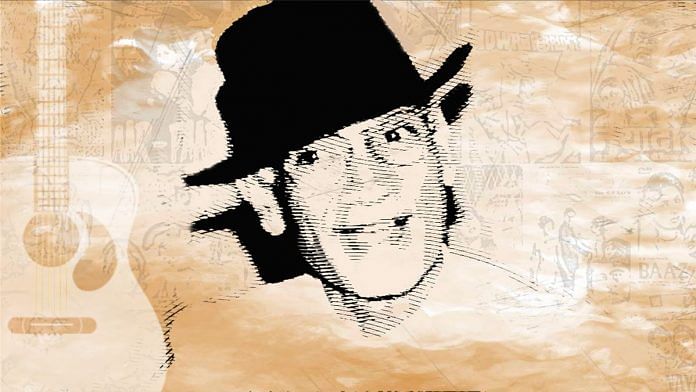New Delhi: When you hum and tap your foot to the cheerful, catchy tunes of yesteryear songs like Maangke Saath Tumhara or Mera Naam Chin Chin Choo or Isharon Isharon Mein, you have one man to thank — O.P. Nayyar. The man who took Bollywood by storm with his delightful compositions and music direction, Nayyar remains a massive influence on Hindi film music.
Born on 16 January 1926, Om Prakash Nayyar was always fascinated by music. At a young age, he ran away from home to make a name for himself in the music industry. His first composition project was a Urdu/Hindi film, Kaneez (1949).
While his first few films were forgettable, 1953’s Baaz, starring Guru Dutt in his debut role, was Nayyar’s big break. He went on to rule Bollywood with his songs in the 60s and 70s, composing and directing for films starring Dev Anand, Guru Dutt, Sharmila Tagore, Mala Sinha, Dilip Kumar, and other major stars.
While he entranced audiences with his work, he also created a reputation of being an egotistical and uncompromising genius. Not only would he be extremely selective with the singers he would work with — very famously, he favoured Asha Bhosle over her sister Lata Mangeshkar — he would also quote hefty fees, which would rattle filmmakers. He would often say, “I have a king-size ego. Nothing and no one can change that.”
Nayyar’s personal life was also just as dramatic as the films he composed for. There were rumours of him dating Asha Bhosle, his protegee at the time, while he was married to Saroj Mohini with whom he had three children. This led to his estrangement from his family and a professional slump when his relationship with Bhosle ended in 1973.
It was after this that he met Madhuri Joglekar, a gifted background singer who helped him source singers and musicians for his soundtracks. She was nearly 20 years younger than him, but ended up becoming his protegee, his confidante, and longtime companion.
Nayyar passed away on 28 January 2007, due to health complications. As we remember the maestro’s genius on his death anniversary, here are just some of his best works:
C.I.D. (1956)
C.I.D. was a hit for many reasons — Dev Anand, Waheeda Rehman, the suspenseful plot and, of course, the music. Every song, including Mumbai Meri Jaan, Leke Pehla Pehla Pyaar, and Aankhon Hi Aankhon Mein, is a classic. Incidentally, one song, Jaata Kahaan Hai Deewane, was removed from the film by the censor board as it contained the word ‘fifi’, which they insisted was obscene.
Aar Paar (1954)
This film was a super hit thanks to the winning combination of Nayyar and Guru Dutt. Babuji Dheere Chalna is the most popular number, but the entire playlist can be called a personification of Nayyar’s style. The composer was known for using different instruments, including coconut shells, with classical ones like tabla and tonga to create unique scores throughout the tracklist.
Howrah Bridge (1958)
It is difficult not to join in when Mera Naam Chin Chin Choo plays. One can only think of Helen dancing while the audience, in the film and those watching it, sit entranced. It was also the last song Geeta Dutt did with Nayyar, before he phased her out for an up-and-coming Asha Bhosle. And Aaiye Meherban, with Bhosle’s silky voice and Madhubala’s graceful dancing, will forever be one of the smoothest, most romantic songs created by Nayyar.
- Ek Musafir, Ek Hasina (1962)
Starring Joy Mukherjee and Sadhana, this film was a box office hit in 1962. The song Bahut Shukriya, Badi Meherbani is the most popular out of the entire playlist and is still considered a classic. Again, a Nayyar composition was dropped from the playlist when the film finally released, for reasons unknown.
Naya Daur (1957)
Naya Daur was an instant hit thanks to its theme of ‘man vs. machine’. The playlist of the film was just as important as the film’s plot as it actually helps underline the message. Songs like Saathi Haath Badhana and Yeh Desh Hai Veer Jawano Ka, became anthems for the labour movement, while songs like Maangke Saath Tumhara and Ude Jab Jab Zulfein Teri became romantic hits. The songs were inspired by the music of a Punjabi troupe, which had performed at the 25th week celebrations of another B.R. Chopra film, Ek Hi Raasta (1956).
Kashmir Ki Kali (1964)
This Shammi Kapoor and Sharmila Tagore-starrer is still considered one of the most memorable films to have been made in the 1960s. Nayyar’s music compositions helped it get that cult status, with songs like Yeh Chand Sa Roshan Chehra, Deewana Hua Badal, and more. Interestingly, Nayyar was not the first choice of composer for the film, but Shankar-Jaikishan. Nayyar invited filmmaker Shakti Samanta to hear some 30-odd tracks, and he instantly fell in love with them, sealing the deal.
Sawan Ki Ghata (1966)
Samanta’s other film, which he commissioned Nayyar to do after listening to his tracks. Half were finalised for Kashmir Ki Kali, and the remaining were used for Sawan Ki Ghata, another musical hit. Songs like Jara Haule Haule Chalo More Sajna, Zulfon Ko Hataa Le Chehre Se, and Jo Dil Ki Tadap Na Jane are Nayyar classics.
Phir Wohi Dil Laya Hoon (1963)
This film, again, was a box office hit. Directed by Nasir Hussain, who had worked with Nayyar before in Tumsa Nahin Dekha, the film’s playlist was an equal hit thanks to the voices of Mohammed Rafi and Bhosle.
Also read: Farooq Sheikh, the Jack of all trades — theatre, TV, films and secret philanthropy







Also like sound track of Yeh Raat Phir Na Ayegi and Sone ki chidiya .